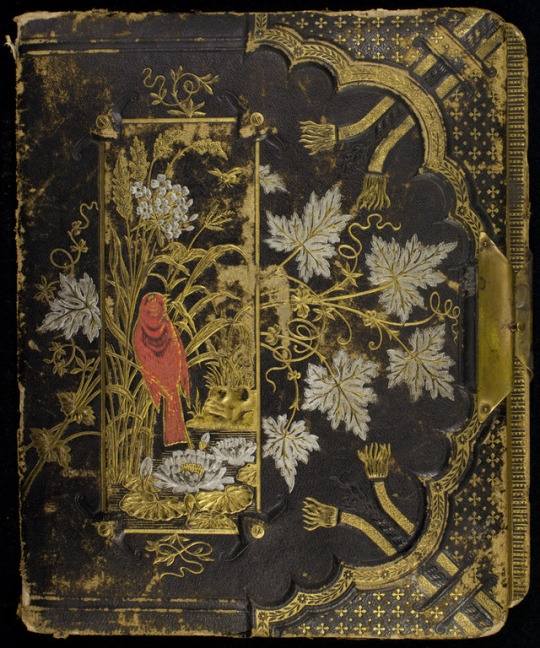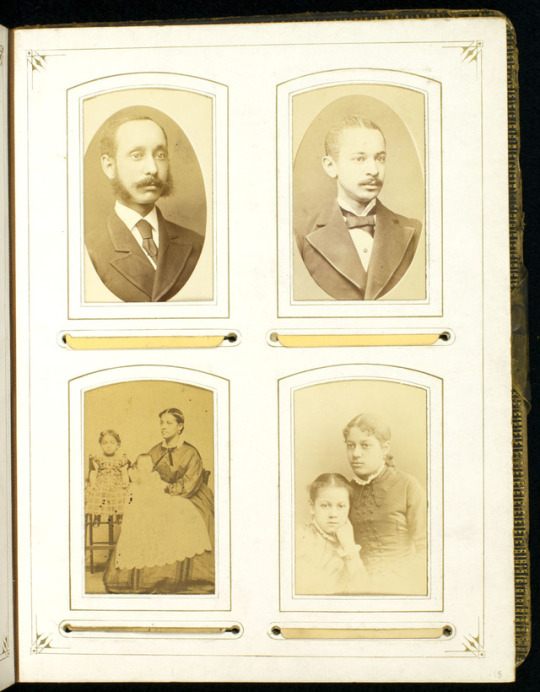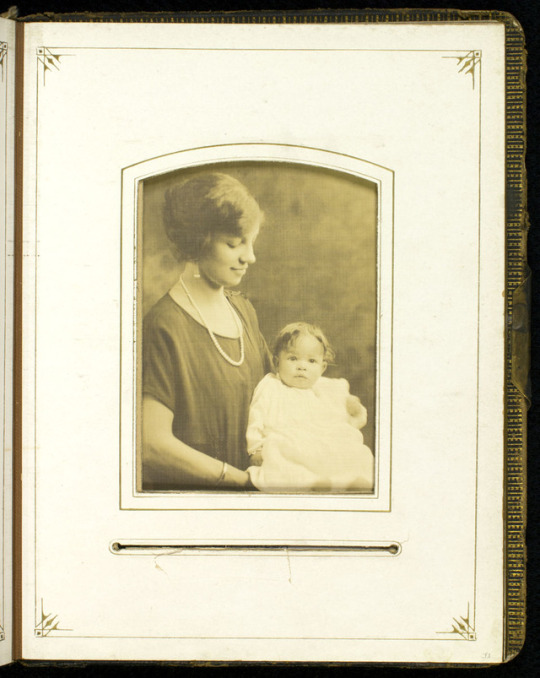#AfricanAmericana
Text

In honor of Juneteenth.
On June 19, 1865, federal orders were read in Galveston, Texas announcing the emancipation of all remaining enslaved persons in the confederacy. Though formally freed two years earlier by the emancipation proclamation of 1863, word didn't reach Texas due in part to its remote location, and by the lack of Union troops present to enforce the proclamation. This image by artist Thomas Nast was originally published in "Harper's Weekly" on January 24, 1863 and depicts a series of scenes contrasting African American life before and after emancipation.
Nast, Thomas. Emancipation: the past and the future. Philadelphia: J. W. Umpehent, 1865.
127 notes
·
View notes
Video
NEW SINGLE "Pushin'" prod. by @linko_dah_lingo: An animated short by @chibuyum "Peep the visuals & get lost in the sonic waves. Glare as we destroy Neo Yokio on our top of the line Vespa." #music #newmusic #hiphop #animation #visualart #colorful #AfricanAmericana #mosclutch #chibuyum #wrathworks #dreamworks #adultswim #chase #illustration #fashion #balenciaga #offwhite #fearofgod
#colorful#illustration#offwhite#fearofgod#music#chibuyum#adultswim#fashion#visualart#mosclutch#dreamworks#animation#africanamericana#balenciaga#chase#newmusic#hiphop#wrathworks
1 note
·
View note
Photo

SPRING HIGHLIGHTS: Our March sale of Printed & Manuscript African Americana was led by volume one, number one of "The Mirror of Liberty," July 1838, the first black periodical published in the US, edited by #DavidRuggles-one of #NewYork's leading abolitionists. The radical #abolistionist publication earned $37,500. #SwannGalleries #SwannAfricanAmericana #africanamericanhistory #africanamericana #themirrorofliberty #SwannBooks https://ift.tt/2jHGWui
3 notes
·
View notes
Photo

On June 19, 1865, federal orders were read in Galveston, Texas emancipating all remaining enslaved persons in the confederacy. Though formally freed two years earlier by the emancipation proclamation of 1863, word didn't reach Texas due in part to its remote location, and by the lack of Union troops present to enforce the proclamation.
This image by artist Thomas Nast was originally published in "Harper's Weekly" on January 24, 1863 and depicts a series of scenes contrasting African American life before and after slavery.
Nast, Thomas. Emancipation: the past and the future. [graphic]. Philadelphia: Published by J. W. Umpehent, 607 Sansom Street, Printed in color by King & Baird, 607 Sansom Street, Philadelphia, 1865.
16 notes
·
View notes
Photo

😽I don't know where I'm going, I'm just floating 😽#art #digital #africanamericana #kodakblack #music #hiphop #black #women #fashion
1 note
·
View note
Video
instagram
#sugoi #AA #AFRICANAMERICANA @africanamericanaofficial @chibuyum
0 notes
Photo

Today we remember the legacy of Dr. #MartinLutherKingJr., who’s vision of #civilrights, brotherhood and #equality still impacts us today. Pictured here is a photo of Dr. King with his wife Coretta, who helped spearhead the #civilrightsmovement alongside her husband. #MLK #martinlutherking #corettascottking #africanamericana #americana #americanhistory http://bit.ly/2U4TVmg
8 notes
·
View notes
Photo

Today is Juneteenth, the anniversary of the end of slavery. Although the Emancipation Proclamation was issued in 1862, slavery effectively continued until the end of the Civil War in 1865. To commemorate we wanted to highlight a group portrait of the first African American senator and representatives, which currently on display in our exhibition, From Negro Pasts to Afro-Futures: Black Creative Re-Imaginings.
Currier & Ives, The First Colored Senator and Representatives (New York, 1872). Lithograph.
These seven individuals embodied Black politics during the Reconstruction Era. While serving in their respective positions, these politicians advocated for public school education, universal suffrage, war amnesty, funding national infrastructure, labor rights, and civil rights.
#juneteenth#blackhistory#LCPafrofutures#LCPexhibits#1870s#LCPprints#LCPPAAH#AfricanAmericana#specialcollections#tumblarians
823 notes
·
View notes
Photo


Attributed to James F. Queen after Henry L. Stephens, “Free!,” “Make Way for Liberty!,” “The Lash.,” and “Blow for Blow” from Journey of a Slave from Plantation to the Battlefield (Philadelphia, 1863). Chromolithographic collecting cards.
Turning the Tables on the Overseer (New York, 1863). Wood engraving.
The depictions in “The Lash,” “Blow for Blow,” and “Make Way for Liberty” chromolithographic collecting cards and in the larger wood engraving present a stark contrast between the necessary violence perpetrated by the slave and the punitive and arbitrary violence of the white master.
From Negro Pasts to Afro-Futures : Black Creative Re-Imaginings on display now through October 18, 2019.
#LCPexhibits#LCPafrofutures#LCPPAAH#BlackHistory#AfricanAmericana#Slavery#1860s#turningthetide#specialcollections#tumblarians
228 notes
·
View notes
Video
undefined
tumblr
Fan, late 19th century. Stevens-Cogdell/Sanders Venning Collection.
This fan is a keepsake from the Stevens-Cogdell/Sanders-Venning family papers. The whole collection documents the development of a prominent middle-class mixed race family in Philadelphia, Pennsylvania.
You can see this fan and more from the collection in the exhibition From Negro Pasts to Afro-Futures : Black Creative Re-Imaginings currently on display!
#LCPafrofutures#LCPexhibits#LCPmanuscripts#LCPPAAH#blackhistory#AfricanAmericana#19thcentury#philadelphia#specialcollections#tumblarians
89 notes
·
View notes
Photo

C. Shoosmith, “A Free Negress and Other Market-Women,” in James Henderson, A History of Brazil: Comprising Its Geography, Commerce, Colonization, Aboriginal Inhabitants, &c. &c. (London, 1821). Lithograph.
This image of Black Brazilian market women selling goods shows the importance of women entrepreneurs in the marketplace. Their presence demonstrated how savvy and creative Black businesses were in the 19th century.
From Negro Pasts to Afro-Futures : Black Creative Re-Imaginings is on display now through October 18, 2019.
#LCPafrofutures#LCPexhibits#LibraryGifs#BlackHistory#LCPPAAH#AfricanAmericana#LCPrarebooks#1820s#specialcollections#tumblarians
60 notes
·
View notes
Photo

John Sartain, Cinque: The Chief of the Amistad (Philadelphia, 1841). Mezzotint. Painted by Nathaniel Jocelyn; engraved by J. Sartain.
This engraving depicts Joseph Cinque, the leader of the Amistad uprising, standing against a lush African landscape. The toga and walking cane in his hand imbue Cinque and the scene with an air of stateliness and power that was unusual in contemporary depictions of Africans in the U.S. This allusion to a regal and empowered Cinque functions as a reclamation of the African Diaspora’s past and future
From Negro Pasts to Afro-Futures : Black Creative Re-Imaginings on display now through October 18, 2019.
76 notes
·
View notes
Photo



Album of Richard DeReef Venning (1865–1922). Stevens-Cogdell/Sanders-Venning Collection.
This photo album contains portraits of a prominent Philadelphia family, the Stevens-Cogdell/Sanders-Vennings, and other unidentified people. The family, which descended from Richard Cogdell (1787-1866) and the enslaved Sarah Martha Sanders (1815-1850), was actively involved in political, social, and cultural matters in the Philadelphian Black community.
Follow the title link to see the entire album.
From Negro Pasts to Afro-Futures : Black Creative Re-Imaginings is on display now through October 18, 2019.
#LCPafrofutures#LCPexhibits#19thcentury#photoalbums#LCPephemera#vcpatlcp#blackhistory#AfricanAmericana#LCPPAAH#specialcollections#tumblarians
42 notes
·
View notes
Photo

Charles Stearns, “Religious Dancing of the Blacks, Termed ‘Shouting’” from The Black Man of the South and the Rebels (New York, 1872).
This image was published post-Emancipation. However, by the antebellum era, after the Second Great Awakening, a great number of enslaved people converted to Protestant Christianity. The enslaved put their distinctive mark on worship and integrated enthusiastic religious practices with linkages to West Africa like polyrhythmic singing, “holy dancing,” and drums. Although the South banned the creation of Black-controlled churches, Black people found ways to worship privately with each other as a community act.
From Negro Pasts to Afro-Futures : Black Creative Re-Imaginings is on display now through October 18, 2019.
#LCPafrofutures#LCPexhibits#BlackHistory#AfricanAmericanHistory#lcppaah#AfricanAmericana#1870s#LCPrarebooks#specialcollections#tumblarians
33 notes
·
View notes
Photo

This album belonging to Mary Anne Dickerson, a young middle-class African American Philadelphian, was probably created as a pedagogical instrument to promote cultivated expression, with contributions dating from 1833 until 1882 including this delicate floral watercolor painted by Sarah Mapps Douglass. Douglass, an artist and prominent Quaker member of the Philadelphia African American elite community, was best known as an educator and anti-slavery activist.
Douglass, S. M. (Sarah Mapps), 1806-1882 artist. Forget me not. S.M.D.
ca. 1843. Physical Description1 drawing: pen and ink, watercolor; overall 28 x 23 cm. (11 x 9 in.)
#HerNaturalHistory#lcppaah#AfricanAmericana#AfricanAmericanHistory#lcpprints#ephemera#19thcentury#VCPatLCP#specialcollections#Tumblarians#womenshistory
68 notes
·
View notes
